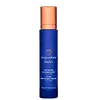What's inside
What's inside
 Key Ingredients
Key Ingredients

 Benefits
Benefits

 Concerns
Concerns

 Ingredients Side-by-side
Ingredients Side-by-side

Aloe Barbadensis Leaf Juice
Skin ConditioningOrbignya Oleifera Seed Oil
EmollientGlycerin
HumectantWater
Skin ConditioningCetyl Alcohol
EmollientGlyceryl Oleate
EmollientLauryl Glucoside
CleansingAmorphophallus Konjac Root Powder
AbrasiveSimmondsia Chinensis Seed Oil
EmollientStearic Acid
CleansingChamaecyparis Obtusa Oil
MaskingCalophyllum Inophyllum Seed Oil
AntimicrobialLepidium Meyenii Root Extract
Skin ConditioningCucumis Sativus Oil
EmollientChamomilla Recutita Flower Extract
MaskingRosa Centifolia Flower Extract
AstringentArgania Spinosa Kernel Oil
EmollientCupressus Sempervirens Oil
MaskingPanthenol
Skin ConditioningSodium Phytate
Propanediol
SolventCoco-Glucoside
CleansingGlyceryl Caprylate
EmollientSodium Levulinate
Skin ConditioningXanthan Gum
EmulsifyingPotassium Sorbate
PreservativeMaltodextrin
AbsorbentLimonene
PerfumingAloe Barbadensis Leaf Juice, Orbignya Oleifera Seed Oil, Glycerin, Water, Cetyl Alcohol, Glyceryl Oleate, Lauryl Glucoside, Amorphophallus Konjac Root Powder, Simmondsia Chinensis Seed Oil, Stearic Acid, Chamaecyparis Obtusa Oil, Calophyllum Inophyllum Seed Oil, Lepidium Meyenii Root Extract, Cucumis Sativus Oil, Chamomilla Recutita Flower Extract, Rosa Centifolia Flower Extract, Argania Spinosa Kernel Oil, Cupressus Sempervirens Oil, Panthenol, Sodium Phytate, Propanediol, Coco-Glucoside, Glyceryl Caprylate, Sodium Levulinate, Xanthan Gum, Potassium Sorbate, Maltodextrin, Limonene
Water
Skin ConditioningGlycerin
HumectantPrunus Amygdalus Dulcis Oil
Skin ConditioningRosa Damascena Flower Water
MaskingDisodium Cocoyl Glutamate
CleansingCoco-Glucoside
CleansingXanthan Gum
Emulsifying1,2-Hexanediol
Skin ConditioningCitric Acid
BufferingSodium Chloride
MaskingCarrageenan
Coconut Acid
CleansingO-Cymen-5-Ol
AntimicrobialCucumis Sativus Fruit Extract
EmollientHelianthus Annuus Seed Oil
EmollientTocopherol
AntioxidantHydrolyzed Rice Protein
Skin ConditioningMaltodextrin
AbsorbentAloe Barbadensis Leaf Juice Powder
Skin ConditioningCamellia Sinensis Leaf Extract
AntimicrobialHydrogenated Lecithin
EmulsifyingTocopheryl Acetate
AntioxidantAlanyl Glutamine
HumectantArginine
MaskingOligopeptide-177
Phenylalanine
MaskingPotassium Sorbate
PreservativeSisymbrium Irio Seed Oil
MaskingWater, Glycerin, Prunus Amygdalus Dulcis Oil, Rosa Damascena Flower Water, Disodium Cocoyl Glutamate, Coco-Glucoside, Xanthan Gum, 1,2-Hexanediol, Citric Acid, Sodium Chloride, Carrageenan, Coconut Acid, O-Cymen-5-Ol, Cucumis Sativus Fruit Extract, Helianthus Annuus Seed Oil, Tocopherol, Hydrolyzed Rice Protein, Maltodextrin, Aloe Barbadensis Leaf Juice Powder, Camellia Sinensis Leaf Extract, Hydrogenated Lecithin, Tocopheryl Acetate, Alanyl Glutamine, Arginine, Oligopeptide-177, Phenylalanine, Potassium Sorbate, Sisymbrium Irio Seed Oil
 Reviews
Reviews

Ingredients Explained
These ingredients are found in both products.
Ingredients higher up in an ingredient list are typically present in a larger amount.
Coco-Glucoside is a surfactant, or a cleansing ingredient. It is made from glucose and coconut oil.
Surfactants help gather dirt, oil, and other pollutants from your skin to be rinsed away.
This ingredient is considered gentle and non-comedogenic. However, it may still be irritating for some.
Learn more about Coco-GlucosideGlycerin is already naturally found in your skin. It helps moisturize and protect your skin.
A study from 2016 found glycerin to be more effective as a humectant than AHAs and hyaluronic acid.
As a humectant, it helps the skin stay hydrated by pulling moisture to your skin. The low molecular weight of glycerin allows it to pull moisture into the deeper layers of your skin.
Hydrated skin improves your skin barrier; Your skin barrier helps protect against irritants and bacteria.
Glycerin has also been found to have antimicrobial and antiviral properties. Due to these properties, glycerin is often used in wound and burn treatments.
In cosmetics, glycerin is usually derived from plants such as soybean or palm. However, it can also be sourced from animals, such as tallow or animal fat.
This ingredient is organic, colorless, odorless, and non-toxic.
Glycerin is the name for this ingredient in American English. British English uses Glycerol/Glycerine.
Learn more about GlycerinMaltodextrin is a polysaccharide. It is derived from starch such as rice, corn, wheat, or potato starch.
In food, Maltodextrin is used to improve the texture and thicken a product. Due to its structure, it can help create a gel texture. As an emulsion stabilizer, it helps keep the ingredients in a product together.
As a polysaccharide, Maltodextrin has moisturizing properties. Polysaccharides are a type of carbohydrate. The top layer of skin uses polysaccharides to retain water, keeping the skin hydrated.
Maltodextrin is water soluble and has a sweet taste.
Learn more about MaltodextrinPotassium Sorbate is a preservative used to prevent yeast and mold in products. It is commonly found in both cosmetic and food products.
This ingredient comes from potassium salt derived from sorbic acid. Sorbic acid is a natural antibiotic and effective against fungus.
Both potassium sorbate and sorbic acid can be found in baked goods, cheeses, dried meats, dried fruit, ice cream, pickles, wine, yogurt, and more.
You'll often find this ingredient used with other preservatives.
Learn more about Potassium SorbateWater. It's the most common cosmetic ingredient of all. You'll usually see it at the top of ingredient lists, meaning that it makes up the largest part of the product.
So why is it so popular? Water most often acts as a solvent - this means that it helps dissolve other ingredients into the formulation.
You'll also recognize water as that liquid we all need to stay alive. If you see this, drink a glass of water. Stay hydrated!
Learn more about WaterXanthan gum is used as a stabilizer and thickener within cosmetic products. It helps give products a sticky, thick feeling - preventing them from being too runny.
On the technical side of things, xanthan gum is a polysaccharide - a combination consisting of multiple sugar molecules bonded together.
Xanthan gum is a pretty common and great ingredient. It is a natural, non-toxic, non-irritating ingredient that is also commonly used in food products.
Learn more about Xanthan Gum